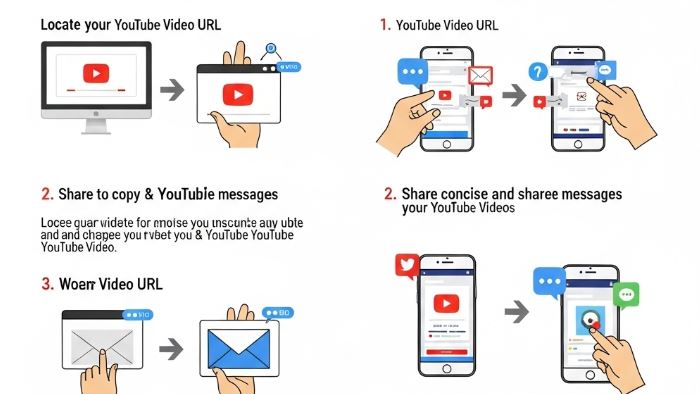Explaining rules and regulations can feel like navigating a labyrinth, especially when you’re doing it in English. Whether you’re clarifying company policies, outlining game instructions, or interpreting legal statutes, clear and concise communication is key. This guide offers a comprehensive look at the essential phrases you need to master this skill, ensuring your explanations are easily understood.
The Foundation: Basic Explanatory Phrases 🧱
Let’s start with the building blocks. These are phrases you’ll use constantly to introduce and clarify rules.
- „The rule states that…”: This is a direct and formal way to introduce a rule. For example: „The rule states that employees must wear ID badges at all times.”
- „According to the regulations…”: Similar to the previous phrase, but often used for official or legal documents. „According to the regulations, no parking is allowed on the east side of the building after 6 PM.”
- „In accordance with the policy…”: Used when referring to internal company policies. „In accordance with the policy, vacation requests must be submitted at least two weeks in advance.”
- „The guidelines are as follows…”: Use this to list a series of rules or instructions. „The guidelines are as follows: First, log in to the system. Second, select the ‘New Request’ option. Third, fill out the form completely.„
- „This means that…”: A simple yet powerful phrase to explain the implication of a rule. „The deadline is Friday at 5 PM. This means that no submissions will be accepted after that time.”
Adding Clarity: Phrases for Elaboration and Detail 🔎
Sometimes, a simple statement isn’t enough. You need to provide additional context and details. These phrases will help you do just that.
- „In other words…”: Use this to rephrase a rule in simpler terms. „Employees must adhere to the dress code. In other words, professional attire is required at all times.”
- „To put it simply…”: Another way to simplify complex rules. „The system automatically flags suspicious transactions. To put it simply, if something looks unusual, it will be reviewed.”
- „Specifically…”: Use this to provide more specific details about a rule. „The policy prohibits outside food in the laboratory. Specifically, no food or drink is allowed in the testing areas.”
- „That is to say…”: Similar to „in other words,” but often used for more formal explanations. „The contract stipulates a 30-day notice period. That is to say, you must inform us of your intention to leave at least 30 days before your departure date.”
- „For example…”: Essential for illustrating how a rule applies in practice. „Employees are responsible for maintaining a clean workspace. For example, you should clear your desk at the end of each day and dispose of any trash properly.”
Handling Exceptions and Conditions ⚠️
Most rules have exceptions or conditions. Being able to explain these nuances is crucial.
- „Unless…”: Introduces an exception to a rule. „All employees must attend the training session unless they have prior approval from their manager.”
- „Except for…”: Similar to „unless,” but often used when listing multiple exceptions. „All sections of the report must be completed, except for sections 3 and 7, which are not applicable to this project.”
- „Provided that…”: Indicates a condition that must be met for the rule to apply. „You may use company resources for personal projects, provided that it does not interfere with your work responsibilities.”
- „On the condition that…”: Similar to „provided that,” but often used in more formal contexts. „The loan will be approved on the condition that you provide proof of income.”
- „However…”: Introduces a contrasting point or limitation. „The policy allows for flexible work hours. However, all employees must be available during core business hours.”
Emphasizing Importance and Consequences 📢
Sometimes, you need to highlight the importance of following a rule or the consequences of not doing so.
- „It is essential that…”: Emphasizes the importance of a rule. „It is essential that all safety protocols are followed.”
- „It is important to note that…”: Draws attention to a significant detail. „It is important to note that this rule applies retroactively.”
- „Failure to comply with…”: Clearly states the consequences of not following a rule. „Failure to comply with these regulations may result in disciplinary action.”
- „Non-compliance will result in…”: Another way to state the consequences of not following a rule. „Non-compliance will result in a fine or suspension.”
- „Please be aware that…”: A polite way to warn about potential consequences. „Please be aware that repeated violations of this policy will lead to termination.”
Phrases for Clarification and Confirmation ❓
Make sure your audience understands the rules by using phrases to encourage questions and confirmation.
- „Are there any questions?”: A straightforward way to invite questions.
- „Does that make sense?”: Checks for understanding.
- „Is that clear?”: Another way to check for understanding.
- „To summarize…”: Provides a concise recap of the rules.
- „Let me know if you have any questions.”: Offers ongoing support.
Real-World Examples and Applications 🌎
Let’s look at some examples of how these phrases can be used in different contexts.
Example 1: Company Policy
„The company policy regarding social media states that employees should not disclose confidential information online. In other words, do not share any internal company data on your personal social media accounts. Failure to comply with this policy may result in disciplinary action, up to and including termination. Are there any questions?”
Example 2: Game Instructions
„The rules of the game are as follows: First, each player rolls the dice. Second, move your piece the corresponding number of spaces. Third, follow the instructions on the space you land on. Unless you land on a ‘Chance’ space, in which case you draw a card. Is that clear?”
Example 3: Legal Regulation
„According to the regulations outlined in Section 4.2, all businesses must obtain a permit before operating within city limits. This means that you cannot legally conduct business without the proper authorization. However, certain exemptions may apply to non-profit organizations. It is important to note that failure to obtain a permit can result in significant fines.”
Effective communication of rules hinges not just on *what* you say, but *how* you say it. Utilizing these phrases thoughtfully will greatly enhance comprehension and minimize misunderstandings.
My Two Cents: The Power of Empathy ❤️
In my experience, simply reciting rules isn’t enough. People are more likely to understand and follow rules when they feel they are being communicated with fairly and respectfully. I recently observed a situation where a new company policy was met with resistance. The problem wasn’t the policy itself, but the way it was introduced – it felt abrupt and lacked explanation. When the management team took the time to explain the *why* behind the policy, address concerns, and use more empathetic language, the resistance quickly dissipated. This highlights the importance of not just knowing the phrases, but also understanding the emotional impact of your communication.
By mastering these essential phrases and adopting a clear, concise, and empathetic communication style, you can effectively explain rules and regulations in English, ensuring understanding and compliance across various contexts. Good luck! 🍀


